Kinross UFO incident
Kinross UFO Incident
Lieutenant Class I Felix Eugene Moncla Jr. (born October 21, 1926-pronounced dead November 23, 1953) was a United States Air Force pilot who disappeared while performing air threat prevention over Lake Superior in 1953. The incident is also known as the Kinross Incident after the Kinross Air Force Base, where Moncla was on a business trip at the time of his disappearance.
The US Air Force reported that Moncla had crashed and was the target of an interception by a Royal Canadian Air Force aircraft. According to the report, the pilot of the Canadian plane later made contact and stated that he had not seen the interceptor aircraft and that Moncla had never been the target of an interception.
However, for several reasons, the Canadian Air Force denied any connection between their aircraft and the events that occurred that day, which they reported to the public after questions about the incident.
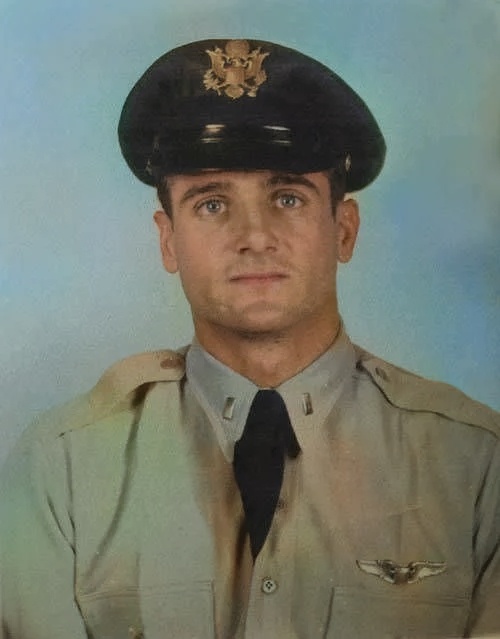
On November 23, 1952, an unidentified poison target with Soo gateways was detected by a ground-based radar located in Michigan. The Soo Locks are a system of parallel locks in the state of Michigan, located on the Saint Marie River, between Lake Superior and Lake Huron, and between the Upper Peninsula of the United States and the Canadian province of Ontario. They are designed to regulate the movement of ships in the territory between Lake Superior and the Great Lakes.
An F-89C Scorpion jet, flown by Lieutenant First Class Moncla and Lieutenant Second Class Robert Wilson, who was the radar operator on Scorpion, took off from Kinross base to investigate the object.
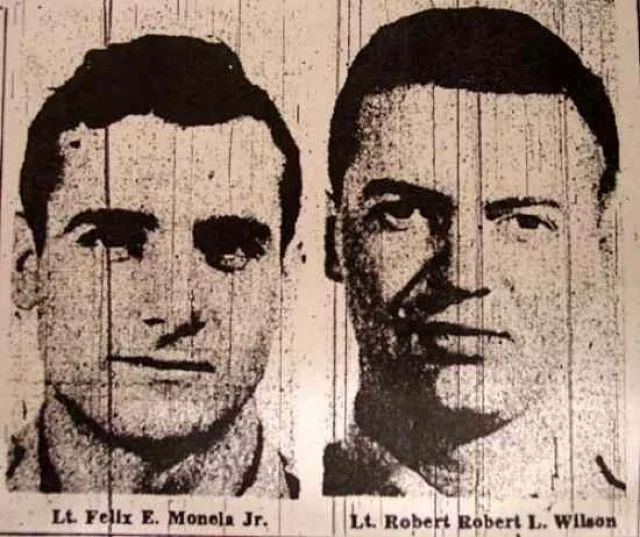
Wilson had a hard time tracking the object, so the ground-based radar operator instructed Moncle to move in a straight direction. As a result, Moncle approached the object at 2500 meters.
The ground-based radar recognized the Scorpion and the unidentified object as two dots on its screen. These two points began to converge until they merged into one point. Assuming that Moncla flew over or under the target, the ground radar operator assumed that the point would soon split again. Donald Kigo reported that there was a fear on the ground that the two objects had collided in mid-air. However, the dot continued to move in the same direction.
An attempt was made to get in touch with Moncla by radio but without success. Immediately, a joint search and rescue operation was launched by the US Air Force and the Royal Canadian Air Force. However, no trace of the plane or the pilots could be found. Weather conditions significantly prevented normal searches.
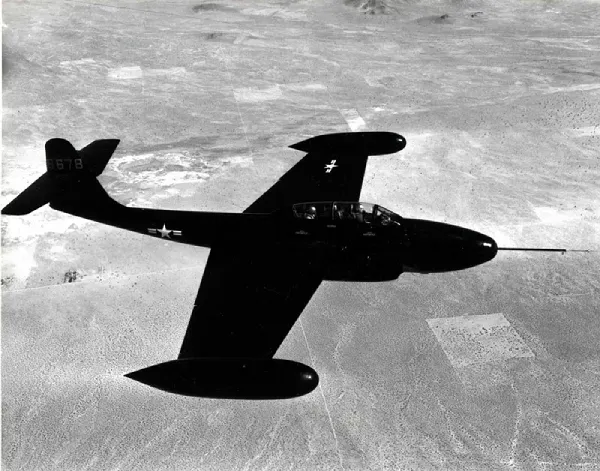
F-89 Scorpion
An official US Air Force report states that the F-89 was sent to get information about why a Royal Canadian Air Force C-47 Skytrain jet went off course.
The F-89 was flying at an altitude of 2,500 meters when it merged with another aircraft, this was explained as an interception. Its Own-Alien signal also disappeared after the dot blinked twice on the radar screen. Although attempts to contact the team by radio were unsuccessful, the pilot of another F-89 that was sent to search said in his report that he heard a radio transmission from the pilot 14 minutes after the plane disappeared.
Air Force investigators reported that Moncla may have felt dizzy and fallen into the lake. The Air Force reported that Moncla occasionally experienced vertigo:
"Additional information revealed during the final stage of the investigation confirms the possibility of Moncla experiencing vertigo attacks with a slight deviation from the norm. Later it turned out that this information was not obtained firsthand, but was transmitted by former members of the organization where Monkla served, so it is equated with rumors."
The pilot's dizziness was not listed as a cause or possible cause in any U.S. Air Force report.
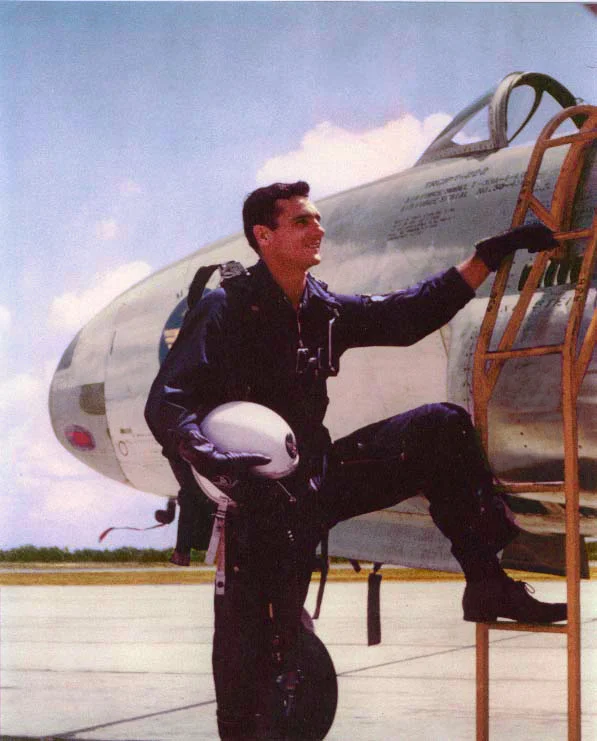
According to the official report on this case, it is noted that the unidentified object was in the radar field, and presumably, it was a VC-912 belonging to the Canadian Air Force.
However, it was classified as "UNIDENTIFIED" because it did not follow the course of the flight plan for about 30 miles. This claim was strongly denied by the pilot of this aircraft, Gerald Fosberg, when he was interviewed for David Chernyak's documentary "Memories of Moncle".
The leadership of the US Air Force also provided an alternative explanation for the incident to the UFO researcher Donald Kigo. In his 1955 book "The Flying Saucer Conspiracy", Kigo describes an investigation into the disappearance of an F-89 that kicked off a night of incidents when he received a phone call during which he was told that, according to rumors at Selfridge Base, an F-89 from Kinross had been shot down by a flying saucer.
A subsequent call to the Public Information Officer, Lieutenant Robert White, made it clear that the unidentified aircraft, in this case, was a Canadian DC-3 that had flown over the locks by mistake. The locks refer to the air area above the Sault Ste-Marie locks and the US-Canada border at the southeastern edge of Lake Superior.
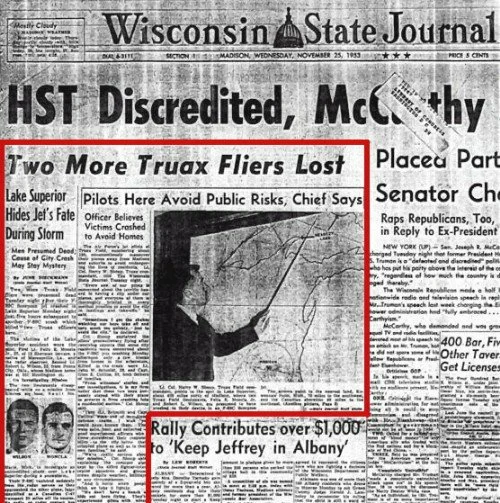
It is possible that the wreckage of the plane was found near the eastern shore of Lake Superior in late October 1968. A U.S. Air Force officer confirmed that the wreckage belonged to a military jet, and news reporters spread rumors that it belonged to an F-89 from Kinross that went missing in 1953. The results of the examination of the wreckage were never published, and the Canadian authorities said they had no information about it.
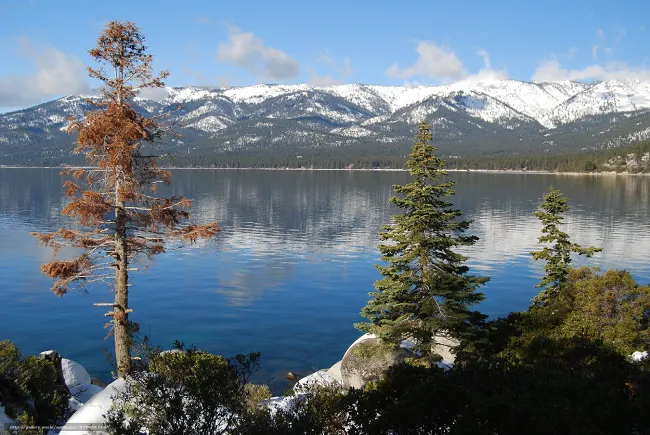
Lake Superior
In late August 2006, an email from Preston Miller was sent to UFO researcher Francis Ridge and contained clippings from an Associated Press article. The clippings said that a group of divers from Michigan had found Moncle's plane, which had disappeared in 1953. Its location was said to be at the bottom of Lake Superior, the same place where the F-89 disappeared from the radar screen.
The letter also contained a link to a website that had recently been set up by a group of divers; they called themselves the Great Lakes Diver Company. Francis Ridge from the letter went to the site "UFO Updates", a popular forum for UFO researchers and writers. As a result, news of the alleged sighting of the plane quickly spread through the UFO community and news sources.
Several reporters tried to contact the Great Lakes Diving Company to find out more information about the find. Reporters contacted a man who claimed to be a representative of the Company. He called himself Adam Jimenez and discussed the discovery with several researchers and journalists. He even went on the radio in the world's most popular program on the paranormal subject of UFO researcher Linda Moulton Howe "Coast to Coast AM".

The company's website initially featured two images of the find, both images reportedly taken from sonar. Blurry, high-noise photos showed an almost completely preserved aircraft lying at the bottom of the lake, nose submerged in silt, with one wing with a tank, the fuselage bent up, all signs of which indicate that this aircraft is an F-89 Scorpion. Initially, the discovery caused great excitement, and many believe that its discovery will shed light on what happened to Felix Montcla in 1953.
However, as journalists and ufologists delved deeper into the case, hopes were dashed, and the story became more and more complex. It was soon announced that an unidentified metal object had been found near the F-89, and sonar photos of this find were soon published on the site. Rumors spread that the teardrop-shaped object is probably a UFO that merged on the radar with the F-89.
Some facts about the discovery allowed journalists to claim that the discovery was a hoax. Several researchers tried to find out more information about the Company and its representative, Adam Jimenez. It turned out that such a company does not exist at all. The only thing that was known about Jimenez was an email address and a mobile phone number. Just 3 weeks after opening, the company's website was closed without explanation, and Adam Jimenez stopped responding to emails and phone calls.
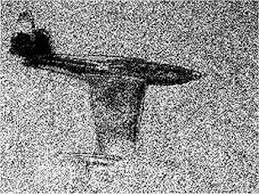
Image of Moncla's plane taken by sonar
The investigation by James Carrion, who at the time was the director of MUFON, which is the largest civilian UFO research organization in the United States, said there was no evidence that the Associated Press wrote the original news, nor that the Great Lakes Diver Company existed outside of its site. Adam Jimenez declined to provide any further information about the company's principles, the type of vessel used, or any other information that could help establish the existence of the organization.
Carrion's investigation found that many of Jimenez's claims about the discovery of the F-89 are untrue, including the claim that the Canadian government prohibits the resumption of work in this area. It turned out that such permissions were not requested.
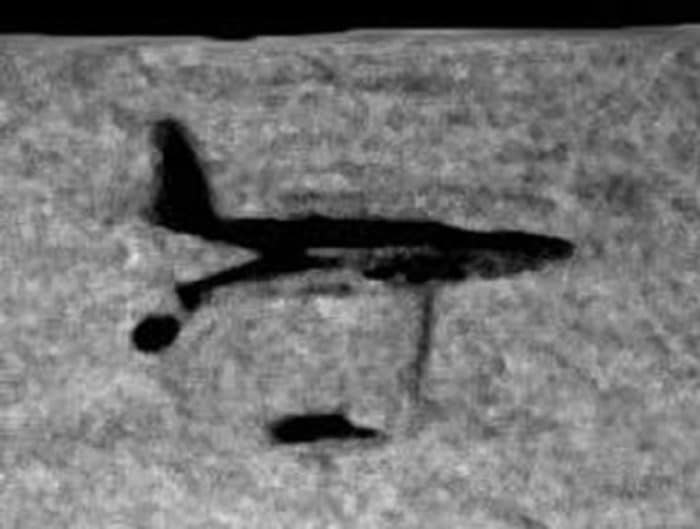
Brandon Baillod, who investigates shipwrecks and is the director of the Great Lakes History organization, claimed that he had never heard of Jimenez or his group. Nor had any of his colleagues heard of it.
Baillod said the images taken were authentic but denied Jimenez's claim that they were taken using sonar, especially at a depth of 150m. He also said that the photos could not have been taken with the converter installed. As a result, it turns out that all this is a hoax, and the mystery of what happened to the F-89 Scorpion aircraft under the control of Felix Moncla and with Moncla himself on November 23, 1953, remains unsolved.
About author:
Serg Toporkov Ufologist, Ph.D., blogger, I go on my own expeditions for UFOs. I use scientific methods to investigate the UAP phenomenon. Write to me |
Related tags:
UFO incident Lake Superior Kinross 1953 Moncla flying saucerRandom UFO or conspiracy article
They exist, it's not a big secret. Russian cosmonaut about aliens
 Russian cosmonaut Mikhail Kornienko, although he has not seen the little green men, is firmly convinced of their existence, because the universe is infinite, and people are not its only inhabitants, which is confirmed by the Top secret Soviet program.
Russian cosmonaut Mikhail Kornienko, although he has not seen the little green men, is firmly convinced of their existence, because the universe is infinite, and people are not its only inhabitants, which is confirmed by the Top secret Soviet program.
